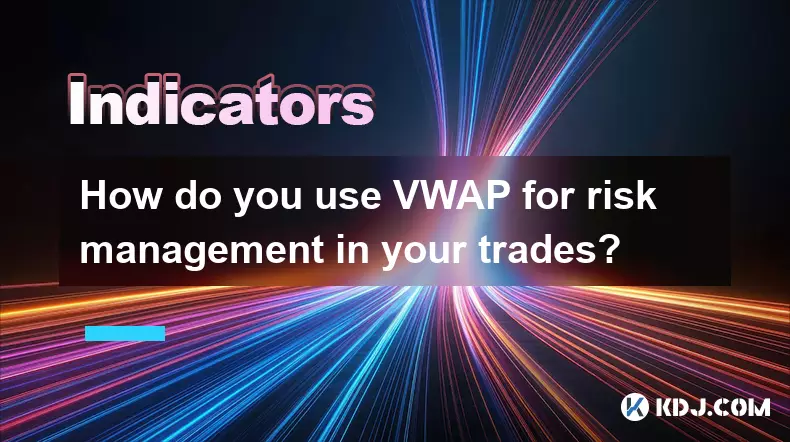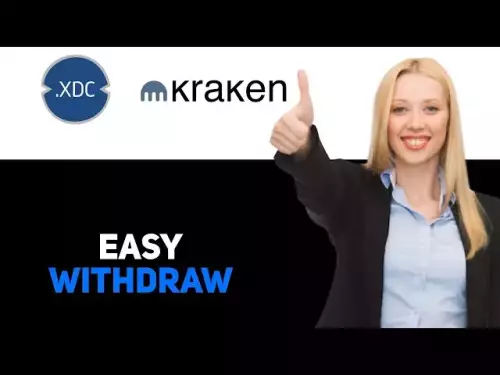-
 bitcoin
bitcoin $114684.631706 USD
-0.87% -
 ethereum
ethereum $4228.677447 USD
1.58% -
 bnb
bnb $1294.880693 USD
-1.16% -
 tether
tether $1.000819 USD
-0.02% -
 xrp
xrp $2.605138 USD
2.79% -
 solana
solana $209.908690 USD
5.89% -
 usd-coin
usd-coin $0.999903 USD
-0.03% -
 dogecoin
dogecoin $0.213423 USD
2.93% -
 tron
tron $0.322721 USD
-0.10% -
 cardano
cardano $0.727247 USD
3.66% -
 hyperliquid
hyperliquid $42.339456 USD
6.05% -
 chainlink
chainlink $19.910811 USD
5.16% -
 ethena-usde
ethena-usde $1.000557 USD
0.00% -
 stellar
stellar $0.349734 USD
2.69% -
 bitcoin-cash
bitcoin-cash $543.848687 USD
-0.21%
How do you use BOLL with moving averages for trend filtering?
Bollinger Bands combined with 50/200 EMA improve crypto trading accuracy by confirming trends and filtering false breakouts in volatile markets.
Oct 13, 2025 at 05:36 am

Understanding BOLL and Moving Averages in Crypto Trading
Bollinger Bands (BOLL) are a widely used technical analysis tool in the cryptocurrency market, offering insights into volatility and price levels. They consist of three lines: a middle band, which is typically a 20-period simple moving average (SMA), and two outer bands that represent standard deviations above and below the middle line. When combined with additional moving averages—such as the 50-period or 200-period exponential moving average (EMA)—traders can create a more robust system for identifying trends and filtering out false signals.
The integration of BOLL with longer-term moving averages enhances decision-making by aligning volatility-based indicators with directional momentum. This combination allows traders to distinguish between ranging markets and strong trending conditions, reducing the likelihood of entering trades during choppy or sideways movements.
Confirming Trend Direction Using Moving Averages
1. The placement of price relative to key moving averages like the 50 EMA or 200 EMA helps determine the prevailing trend. When price consistently trades above these averages, it indicates bullish momentum.
- In conjunction with BOLL, traders observe whether the bands are sloping upward or downward. An upward slope combined with price above the 200 EMA reinforces a long bias.
- Conversely, if price remains below the 200 EMA and the BOLL shows a downward inclination, short opportunities may be favored.
- Crossovers between shorter and longer EMAs, such as the 50 crossing above the 200 (Golden Cross), add confirmation when aligned with BOLL expansion in the same direction.
- During consolidation phases, both BOLL and moving averages may flatten, signaling reduced trend strength and prompting caution in trade entries.
Filtering False Breakouts with Volatility Contraction
1. Narrowing BOLL bands indicate low volatility and often precede significant price moves. However, without alignment from moving averages, these breakouts can fail.
- Traders wait for the price to close beyond the band only if it also breaks and sustains above a key moving average like the 50 EMA, increasing the validity of the move.
- A breakout occurring below the 200 EMA in a downtrend may lack follow-through, even if it touches or exceeds the lower BOLL band.
- When BOLL expands after a squeeze and price simultaneously moves past a major moving average, it suggests a higher probability trend continuation.
- Entries based solely on BOLL extremes without moving average confluence often result in losses during range-bound crypto markets.
Using Multiple Timeframes for Stronger Signals
1. On higher timeframes like the daily chart, the 200 EMA acts as a dynamic support or resistance level. Aligning this with BOLL behavior increases signal reliability.
- For instance, if the daily BOLL shows price rebounding from the lower band while staying above the 200 EMA, it hints at underlying strength despite short-term oversold readings.
- On the 4-hour chart, traders look for price to interact with the middle BOLL (20 SMA) in the direction supported by the daily moving average trend.
- If the weekly trend is up (price above weekly 200 EMA), pullbacks to the 20 SMA on the 4-hour chart within expanding BOLL become high-probability entry zones.
- Divergence between timeframes—such as a bullish BOLL setup on short-term charts conflicting with bearish alignment on the daily moving averages—calls for restraint.
Frequently Asked Questions
What moving average works best with BOLL in crypto trading?The 200-period EMA is commonly used due to its effectiveness in identifying long-term trends in volatile markets. The 50 EMA also serves well for intermediate trend filtering, especially when paired with BOLL’s 20-period SMA.
Can BOLL and moving averages predict reversals accurately?They do not predict but help identify potential reversal zones when confluence occurs. For example, a touch of the lower BOLL band coinciding with a bounce off the rising 200 EMA may highlight a valid support area.
How do you adjust BOLL settings when using multiple moving averages?The default 20-period SMA for BOLL’s middle band is usually kept unchanged. Additional moving averages (like 50 or 200 EMA) are plotted separately and used for trend context rather than altering BOLL parameters.
Is this strategy suitable for all cryptocurrencies?It performs better on high-liquidity assets like BTC or ETH where price action is less prone to manipulation. Low-cap altcoins with erratic movements may generate misleading signals even with confluence filters.
Disclaimer:info@kdj.com
The information provided is not trading advice. kdj.com does not assume any responsibility for any investments made based on the information provided in this article. Cryptocurrencies are highly volatile and it is highly recommended that you invest with caution after thorough research!
If you believe that the content used on this website infringes your copyright, please contact us immediately (info@kdj.com) and we will delete it promptly.
- XRP Price Prediction: Weekend Rollercoaster or Rally?
- 2025-10-12 08:45:16
- Bittensor (TAO): Super Bullish Signals Point to Potential 2x Rally
- 2025-10-11 10:25:12
- Silver Price Correction: Navigating the Dip & Identifying Key SEO Keywords
- 2025-10-11 10:25:12
- Decoding Crypto Trends: Bittensor's Bull Run, Cardano's Dip, and LivLive's Presale Buzz in 'Uptober 2025'
- 2025-10-12 08:45:16
- MoonBull: The Crypto Meme Coin Promising 1000x Gains?
- 2025-10-11 10:30:01
- Crypto Payroll Revolution: Stablecoins, Altcoins, and the Future of Salary Payments
- 2025-10-11 10:30:01
Related knowledge

What's the main difference between VWAP and TWAP?
Oct 12,2025 at 11:54am
Understanding VWAP and Its Role in Crypto Trading1. Volume Weighted Average Price (VWAP) is a trading benchmark that calculates the average price of a...

How do you identify exhaustion moves using VWAP and its bands?
Oct 12,2025 at 08:00am
Understanding the Role of Decentralized Exchanges in Crypto Trading1. Decentralized exchanges (DEXs) operate without a central authority, allowing use...

How do you use VWAP to scale in and out of positions?
Oct 14,2025 at 02:19am
Understanding VWAP as a Dynamic Benchmark1. The Volume Weighted Average Price (VWAP) is not just an indicator—it functions as a dynamic benchmark that...

What are the main advantages of using VWAP over EMA?
Oct 11,2025 at 02:18am
Main Advantages of Using VWAP Over EMA1. Volume-Weighted Average Price (VWAP) incorporates trading volume into its calculation, offering a more accura...

How do you use VWAP on different chart types like Heikin Ashi?
Oct 11,2025 at 05:01pm
Understanding VWAP in the Context of Heikin Ashi Charts1. The Volume Weighted Average Price (VWAP) is a powerful analytical tool commonly used by trad...

How do you use VWAP for risk management in your trades?
Oct 11,2025 at 02:54am
Understanding VWAP as a Dynamic Benchmark1. The Volume Weighted Average Price (VWAP) serves as a crucial reference point in intraday trading by reflec...

What's the main difference between VWAP and TWAP?
Oct 12,2025 at 11:54am
Understanding VWAP and Its Role in Crypto Trading1. Volume Weighted Average Price (VWAP) is a trading benchmark that calculates the average price of a...

How do you identify exhaustion moves using VWAP and its bands?
Oct 12,2025 at 08:00am
Understanding the Role of Decentralized Exchanges in Crypto Trading1. Decentralized exchanges (DEXs) operate without a central authority, allowing use...

How do you use VWAP to scale in and out of positions?
Oct 14,2025 at 02:19am
Understanding VWAP as a Dynamic Benchmark1. The Volume Weighted Average Price (VWAP) is not just an indicator—it functions as a dynamic benchmark that...

What are the main advantages of using VWAP over EMA?
Oct 11,2025 at 02:18am
Main Advantages of Using VWAP Over EMA1. Volume-Weighted Average Price (VWAP) incorporates trading volume into its calculation, offering a more accura...

How do you use VWAP on different chart types like Heikin Ashi?
Oct 11,2025 at 05:01pm
Understanding VWAP in the Context of Heikin Ashi Charts1. The Volume Weighted Average Price (VWAP) is a powerful analytical tool commonly used by trad...

How do you use VWAP for risk management in your trades?
Oct 11,2025 at 02:54am
Understanding VWAP as a Dynamic Benchmark1. The Volume Weighted Average Price (VWAP) serves as a crucial reference point in intraday trading by reflec...
See all articles

























![[4K 60fps] Prisma by novichokk (1 Coin) [4K 60fps] Prisma by novichokk (1 Coin)](/uploads/2025/10/14/cryptocurrencies-news/videos/k-fps-prisma-novichokk-coin/68ee49804ba00_image_500_375.webp)
















































